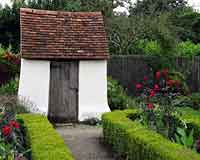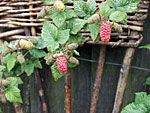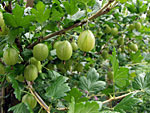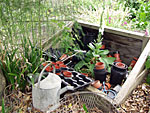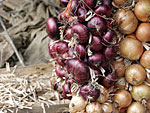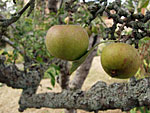|
||||||||||||
|
The gateway between the two gardens of Orchard Side was filled in soon after William Cowper left here in 1786 for Weston Underwood, and thereafter both gardens were tenanted separately. The gateway was not reopened until 1919, after the Museum Trustees had been able to purchase the Summer House Garden for £450 from Arthur Osborn, an Olney butcher. In the 18th century the Summer House Garden belonged to the property next door to Orchard Side, owned by an apothecary, Thomas Aspray, and here he grew his medicinal plants and herbs. It was he who had the Summer House built as a smoking room (smoking not being allowed indoors in the 1700s). William Cowper had the use of the Summer House and it became his favourite retreat for writing poetry and prose. He describes it in various letters:
Soon after Cowper died in 1800, people began to visit the Summer House as a literary 'shrine' and inscribed their names on its internal plaster walls and ceiling; the earliest found is 1804. This garden has no dateline, and the emphasis is on fruit and vegetable growing in the style of a Victorian Kitchen Garden, which can be summarised as crop rotation, straight rows and labour intensive! We do grow some modern varieties, as there are virtually no old soft fruit cultivars available. We grow many old varieties of vegetables obtained through our membership of Garden Organic, the new name for the Henry Doubleday Research Association and also from local seed gifts. Herbs and medicinal plants are being introduced to accord with Thomas Aspray's use of the garden. We have introduced large wooden labels to make it easier for visitors to identify the row contents. Each year we grow out a variety not grown by us for a year or two and also try out new (to us) crops, some more successfully than others. The weather has a large bearing on success in any garden, the current prolonged dry period being especially difficult as we rely on water butts and rainfall. Plants can be watered in, of course, but after that we rely on the incorporation of compost and the application of mulches. The soil is light, on gravel, and very free draining, so the dry summers are a real challenge. As the older fruit trees in the garden decline we are steadily replacing them with suitable varieties for our location and organic growing methods.. The pears, medlar and quince are well established and we intend to include two more plums in the autumn as the gage and Victoria are in serious decline. The new southern fence is now blending in nicely. An increasing number of Gardening Groups are visiting the gardens as a result of talks we give. Charles Knight, Tenant of the Summer House Garden |
|
|||||||||||
|
||||||||||||

